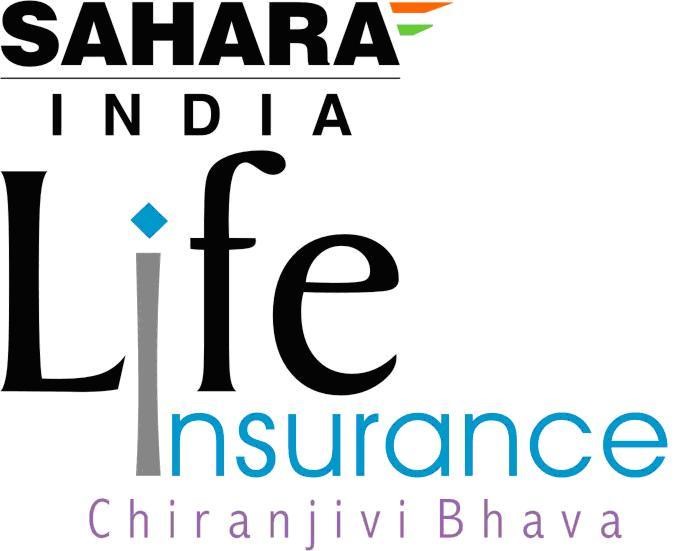What is the 50/30/20 Rule of Budgeting? A Complete Guide with Examples
Being able to manage your personal finances well is a necessary skill. The 50/30/20 rule is one of the most popular and easiest approaches to budgeting. This allows you to work with a simple and versatile framework allowing you to distribute your funds through three main verticals: needs, wants, and savings. In this article, we will explore the 50/30/20 rule in detail, provide useful examples, and talk about how you can apply it to achieve financial stability.
Looking for more ways to secure your financial future? Explore our comprehensive investment plans.
What is the 50/30/20 Rule?
The 50/30/20 rule of budgeting, popularized by U.S. Senator Elizabeth Warren when she published her "All Your Worth: The Ultimate Lifetime Money Plan" book, gives a straightforward framework for managing personal finances. This approach splits your after-tax income into three buckets - 50% for needs, 30% for wants, and 20% for savings and debt payoff.
The beauty of this system resides in its ease and adaptability. In contrast to complicated budgeting methods that involve monitoring numerous categories, this guideline offers a straightforward structure while staying flexible for various life circumstances.
This rule works because it finds a balance between financial responsibility and living. It acknowledges that though saving is critical, allowing room for indulgence is equally important to stick to a budget in the long run.
Why Traditional Budgeting Methods Often Fail
Traditional budgeting approaches frequently fail because they:
- Require extensive tracking of numerous categories
- Create decision fatigue from constant monitoring
- Lack flexibility for life changes
- Don't account for psychological factors in spending
The 50/30/20 rule addresses these issues by providing a simple framework that's both flexible and sustainable.

Understanding the 50/30/20 Rule Components
The 50% - Essential Needs
The largest portion of your budget (50%) should go toward essential needs - expenses that you absolutely cannot avoid. Differentiating between needs and wants is crucial for implementing this rule successfully.
Your take-home pay should be budgeted so that no more than 50% is allocated to this category and this includes:
Housing and Utilities
- Rent or mortgage payments
- Electricity bills
- Water charges
- Gas expenses
- Internet and phone bills (basic plans)
- Property maintenance
- Home Insurance
Basic Living Expenses
- Groceries and household necessities
- Basic clothing
- Healthcare costs and insurance premiums
- Child care expenses
- Transportation for work.
Essential Debt Payments
- Minimum credit card payments
- Student loan minimums
- Car loan payments
- Other essential loan minimums
For example, if your monthly take-home pay is ₹60,000, you should aim to keep your essential expenses within ₹30,000. Here's a detailed breakdown:
- Housing: ₹15,000 (25%)
- Utilities: ₹5,000 (8.3%)
- Groceries: ₹5,000 (8.3%)
- Transportation: ₹3,000 (5%)
- Healthcare/Insurance: ₹2,000 (3.4%)
The 30% - Wants and Lifestyle Choices
The next 30% of your budget is designated for wants - expenses that enhance enjoyment in life but are not essential. This category reflects your lifestyle choices and expenses related to quality of life.
This 30% allocation includes:
Entertainment and Recreation
- Streaming services (Netflix, Amazon Prime)
- Gaming subscriptions
- Movie tickets and events
- Books and magazines
- Hobby supplies
Dining and Social Activities
- Restaurant meals
- Food delivery services
- Coffee shops
- Social outings
- Party expenses
Personal Care and Lifestyle
- Gym memberships
- Spa treatments
- Premium grooming products
- Fashion accessories
- Home Decor
Enhanced Services
- Premium phone plans
- Additional streaming subscriptions
- Upgraded internet packages
- Premium app subscriptions
Using our ₹60,000 example, this means having ₹18,000 available for discretionary spending:
- Entertainment: ₹4,000
- Dining out: ₹5,000
- Personal care: ₹3,000
- Shopping: ₹4,000
- Miscellaneous: ₹2,000
The 20% - Savings and Financial Goals
The final 20% of your income should be directed toward building your financial future through savings and investments. This category is crucial for long-term financial security and wealth building.
Your savings and investments should include:
Emergency Fund Building
- Immediate access savings
- Short-term investment vehicles
- Liquid assets maintenance
Retirement Planning
- Employer-sponsored retirement plans
- Personal retirement accounts
- Long-term investment strategies
- Insurance and pension plans
Investment Portfolio
- Mutual funds
- Stocks and bonds
- Real estate investment trusts (REITs)
- Cryptocurrency (limited portion)
- Insurance-linked investment plans
Debt Reduction Strategies
- Extra debt payments
- High-interest debt elimination
- Debt consolidation options
With a ₹60,000 monthly income, ₹12,000 should go toward these financial goals:
- Emergency fund: ₹4,000
- Retirement savings: ₹4,000
- Investments: ₹2,000
- Additional debt payment: ₹2,000
Practical Implementation of the 50/30/20 Rule
Starting with the 50/30/20 rule requires a clear understanding of your current spending patterns and a systematic approach to implementation. Here's a comprehensive step-by-step approach to get started:
-
Calculate Your Monthly Take-Home Pay
To calculate your monthly net income, you should start with your typical salary after taxes. Incorporate any other sources of consistent monthly revenue. If you have fluctuating income, determine the average over the past 6 months while accounting for any seasonal changes.
-
Track All Expenses Meticulously
Start by collecting all your receipts for a month. Collect your bank and credit card statements and ensure to include any cash expenses. Additionally, document any annual or quarterly expenses that occur regularly and make a note of any automatic payments and subscriptions.
-
Analyze Current Spending Patterns
After monitoring your expenses, the next step is to evaluate your existing spending habits. Make a spreadsheet or utilize a budgeting application to sort each expenditure into needs, desires, or savings. Calculate the percentage of your total expenses that falls into each category and identify areas where your spending exceeds the 50/30/20 rule. Examine trends in your expenditure habits to identify places where you can reduce expenses.
-
Make Necessary Adjustments
Start by tackling the biggest costs initially when implementing changes to see a more substantial impact. Pursue quick benefits like identifying subscriptions that could be canceled or obtaining better rates for current services. Additionally, explore alternatives to any expensive services to see if you can find a more affordable option.
-
Implement Digital Tools and Systems
To enhance the budgeting process and boost adherence to the 50/30/20 rule, consider leveraging digital tools and systems. Choose a reliable budgeting app, set up automatic savings transfers, and make use of expense monitoring tools. Additionally, enable banking alerts for surpassing the budget and consider using separate accounts for different spending categories.
Special Considerations
While the 50/30/20 rule provides an excellent framework, various life circumstances may require thoughtful adjustments:
High Cost of Living Areas
In areas with a high cost of living, it may be required to modify the 50/30/20 rule. Think about a revised 60/20/20 distribution to manage increased necessary expenses. Check for innovative housing options such as house hacking or communal living. Consider transportation options like public transit, cycling, or carpooling to reduce costs. Discover techniques to lower utility costs by tracking energy use and investigating renewable energy alternatives. If housing expenses are extremely high, think about cohabiting to lower your rent or mortgage costs.
Variable Income Management
Managing variable income requires a tactical approach. Start by identifying your minimum income, the least amount you can expect to make each month. Create a buffer in your budget to handle fluctuations in earnings. Additionally, get ready for lean periods by setting aside extra funds when your earnings are higher. Having a bigger emergency fund can offer support during times of income instability. When developing a budget with fluctuating income, it may be beneficial to utilize percentages instead of set amounts to make certain that your expenses correspond with your income level.
Debt Management Strategies
If you’re dealing with ongoing debt, adding debt management strategies to your 50/30/20 budget is critical. Begin by listing all of your current debts and calculating your debt-to-income ratio. Consider debt consolidation options to help you get your payments under control and potentially reduce interest costs. Concentrate on eliminating high-interest debt to lower interest costs. If necessary, adjust the 50/30/20 percentages temporarily to allocate more funds for quick debt repayment.
Life Transitions
During significant life changes, like getting married, having kids, or switching jobs, it's essential to modify your budget accordingly. Adjust the 50/30/20 ratios to reflect variations in income and expenses. Prepare for temporary drops in income during transitions such as parental leave or career shifts. Consider relocation costs if you are transferring to a different city or nation. Get ready for new family members by planning your budget for childcare, schooling, and other associated expenses. Think about career change phases and modify your budget to align with your professional objectives.
Advanced Strategies for Maximum Benefit
Digital Tools and Technology
-
Budgeting Apps
- Expense tracking features
- Category management
- Goal setting capabilities
- Progress monitoring
Compare insurance premiums and features easily.
Psychological Aspects of Budgeting
Here are some tips to build healthy money habits:
- Regular financial reviews
- Mindful spending practices
- Positive reinforcement
- Celebration of milestones
- Protection planning
Real-Life Examples of 50/30/20 Budgeting
Example 1: Single Professional (Monthly Income: ₹60,000)
Needs (50%) - ₹30,000
- Rent: ₹15,000
- Utilities: ₹3,000
- Groceries: ₹5,000
- Transportation: ₹4,000
- Health Insurance: ₹3,000
Wants (30%) - ₹18,000
- Dining Out: ₹5,000
- Entertainment: ₹4,000
- Shopping: ₹5,000
- Gym Membership: ₹2,000
- Miscellaneous: ₹2,000
Savings (20%) - ₹12,000
- Emergency Fund: ₹4,000
- Retirement Savings: ₹5,000
- Investments: ₹3,000
Example 2: Family of Four (Monthly Income: ₹1,20,000)
Needs (50%) - ₹60,000
- Mortgage: ₹25,000
- Utilities: ₹6,000
- Groceries: ₹12,000
- School Fees: ₹8,000
- Transportation: ₹5,000
- Insurance: ₹4,000
Wants (30%) - ₹36,000
- Family Entertainment: ₹8,000
- Dining Out: ₹10,000
- Shopping: ₹8,000
- Hobbies/Activities: ₹6,000
- Miscellaneous: ₹4,000
Savings (20%) - ₹24,000
- Emergency Fund: ₹6,000
- Retirement Savings: ₹8,000
- Children's Education Fund: ₹6,000
- Investments: ₹4,000
Advanced Tips for Success
1. Regular Financial Health Checks
Frequently assess your budget and monitor advancements toward your financial objectives. Keep track of your net worth and credit score to get a comprehensive view of your financial well-being.
2. Optimization Strategies
Increase savings by buying essentials in bulk, shopping during sales, and utilizing loyalty programs. Adjust your insurance plans and investments to match your financial objectives and comfort with risk.
Click here to explore the best insurance plans.
3. Future-Proofing Your Finances
Commit to advancing your career and improving your skills for lasting achievement. Investigate side gigs and passive income options for greater financial security. Moreover, consider planning for the distribution of your assets and ensure comprehensive insurance coverage to secure your family's future.
When to Modify the 50/30/20 Rule
Life Stage Variations
- Young Professionals: Prioritize debt management and career investments while taking advantage of the potential for higher savings.
- Family Stage: Focus on increasing the needs percentage, education planning, and insurance coverage.
- Pre-Retirement: Emphasize accelerated savings, healthcare planning, and eliminating any remaining debt.
Income Level Adjustments
- High Income: Increase savings percentage, diversify investments, and optimize for taxes.
- Lower Income: Focus on meeting essential needs, creative saving strategies, and income growth opportunities.
Special Circumstances
- Medical Conditions: Manage healthcare costs effectively, optimize insurance coverage, and maintain a robust emergency fund.
- Business Owners: Implement variable income planning, balance business investments, and prioritize risk management strategies.
Conclusion
While the 50/30/20 rule offers immediate benefits by organizing your finances, its true power lies in its long-term impact. By consistently allocating funds towards needs, wants, and savings, you build a strong financial foundation that can weather unexpected expenses, support your dreams, and lead to lasting financial well-being.





























